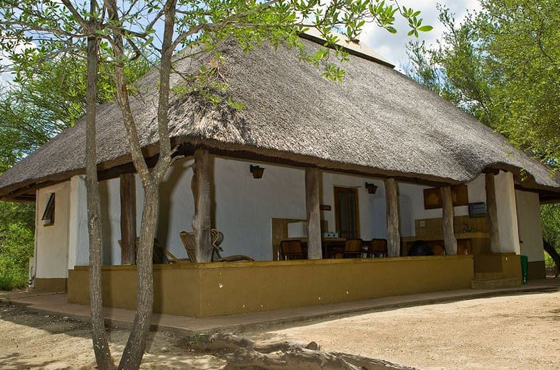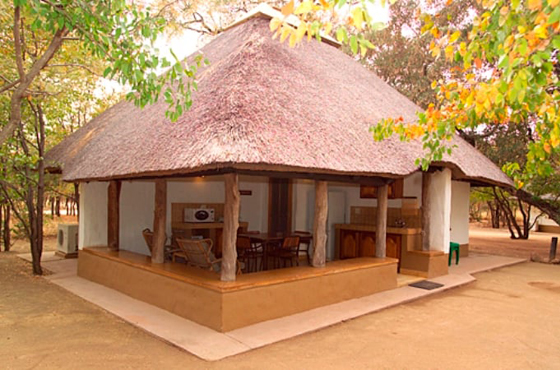
Whatsapp Us

Whatsapp Us

Situated on the banks of the Mashokwe Spruit and approximately 40 km from Shingwedzi Rest Camp, Bateleur Bushveld Camp is nestled within the Mopane woodlands and savannah grasslands in the northern part of the Kruger National Park. As the oldest and smallest of the bushveld camps, this camp was named after majestic Bateleur eagle and is located close to two dams, the Silwervis and Rooibosrand dams, which are only accessible for guests staying at Bateleur Camp and offers excellent game viewing opportunities.
Rates are per night and exclude 1% community fund which will be added when booking.
| Accommodation Type | Base Guests | Base Rate | Additional Adults |
|---|---|---|---|
| Guest Cottage (GA4 / GA6) | 4 | R 3,123 | R 637 |
| Accommodation Type | Base Guests | Base Rate | Additional Adults |
|---|---|---|---|
| Guest Cottage (GA4 / GA6) | 4 | R 3,480 | R 637 |
| Accommodation Type | Base Guests | Base Rate | Additional Adults |
|---|---|---|---|
| Guest Cottage (GA4 / GA6) | 4 | R 2,820 | R 637 |
Dating from the 1980’s, only seven Guest Cottages are available at Bateleur Bushveld Camp, offering an exclusive experience in the bush, which is also family friendly. The cottages are fully equipped and serviced daily.
Many of the bedrooms at this Kruger Park camp have en-suite bathrooms and each bedroom is either air-conditioned or has a ceiling fan. Bedding, towels and soap is provided and electricity is supplied. There are barbecue facilities at each cottage as well as a dedicated parking spot.
Linen, towels and soap is provided. An equipped kitchen is available with a fridge, hotplate and utensils provided.

Even though the Phalaborwa Gate is the nearest entrance gate, it is located 140 km away from the gate, which is about a 4 hours’ drive. Bateleur is exclusively open to guests staying at the camp and no day visitors are allowed. There is a mini shop selling firewood, ice and basic supplies, but there is no restaurant at Bateleur and the shop doesn’t stock food and fresh produce or meat.
Conference facilities for 34 delegates are available and a boma with barbecue facilities and a bread oven is right next door, offering the opportunity for relaxing and enjoying a shared meal after the official business had been completed. The equipment available includes a projection screen, flip chart, white board, TV, video recorder, overhead projector and slide projector (carousel).
Shingwedzi Rest Camp is about 40 km away and has a restaurant, cafeteria, and a fully stocked shop with fresh produce and meat. Bateleur guests are welcome to make use of the amenities at Shingwedzi.
Wildlife viewing is the main activity offered at Bateleur and because the camp is small and exclusively visited by guests staying at the camp, there are never too many vehicles or people around. Just outside the camp is a waterhole with a hide, offering spectacular game viewing opportunities.
Morning and night wildlife game drives are offered with professional and knowledgeable guides giving guests insight into the days and lives of the Kruger wildlife.
There are 336 tree species in the park of which 17 are protected trees.
With an estimated 1500 lions, 17 000 elephants, 48 000 buffalo, 1 000 leopards and just over 2 000 rhinos inhabiting the Kruger National Park, sighting the “Big Five” is very possible when doing game drives. Even though it should not be a prerequisite on a safari and sightings of specific animals absolutely happen on the luck of the draw, these animals are a huge attraction to visitors.
Kruger is one of the premier game-watching destinations in the world. Approximately 147 mammal species occur in the park. It is possible to see all the classical African big game, including elephant, black and white rhino, hippopotamus, giraffe, zebra, buffalo, warthog and many antelope species. Large carnivores include lion, leopard, cheetah, wild dog and spotted hyena. There are also many smaller mammals which are equally enticing.
Something else that became an attraction to wildlife viewing, is a group of insects known as the “Small Five”. This group includes the Elephant Shrew, Ant Lion, Rhinoceros Beetle, Buffalo Weaver and Leopard Tortoise. Kruger National Park also supports packs of the endangered African wild dog, of which there are thought to be only about 400 left in the whole of South Africa.
More than 500 different bird species have a home in Kruger National Park, some of them not to be found anywhere else in South Africa. Numerous water points make for excellent birdwatching, while there are eleven bird/game-viewing hides in some of the camps and picnic sites in the park.
The Kruger Park is inhabited by 114 species of reptiles, including black mambas, African rock pythons, and 3,000 Nile crocodiles 34 species of amphibians are found in the park, as well as 49 fish species. A Zambezi shark, Carcharhinus leucas, also known as the bull shark, was caught at the confluence of the Limpopo and Luvuvhu Rivers in July 1950. Zambezi sharks tolerate fresh water and can travel far up rivers like the Limpopo.
219 species of butterfly and skipper are native to the park. The fastest and most robust of these belong to the genus Charaxes, of which 12 species have been recorded. Genera Papilio and Acraea are also well-represented, with about 10 and 15 species respectively. The total number of Lepidoptera species in the park is unknown but could be in the order of 7,000, many of which range widely in African savanna.